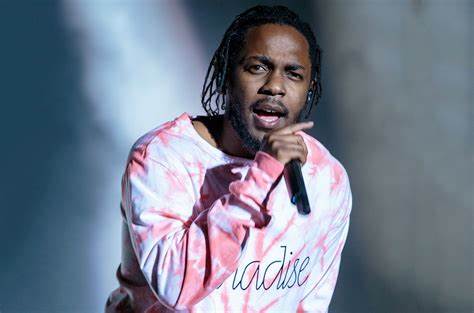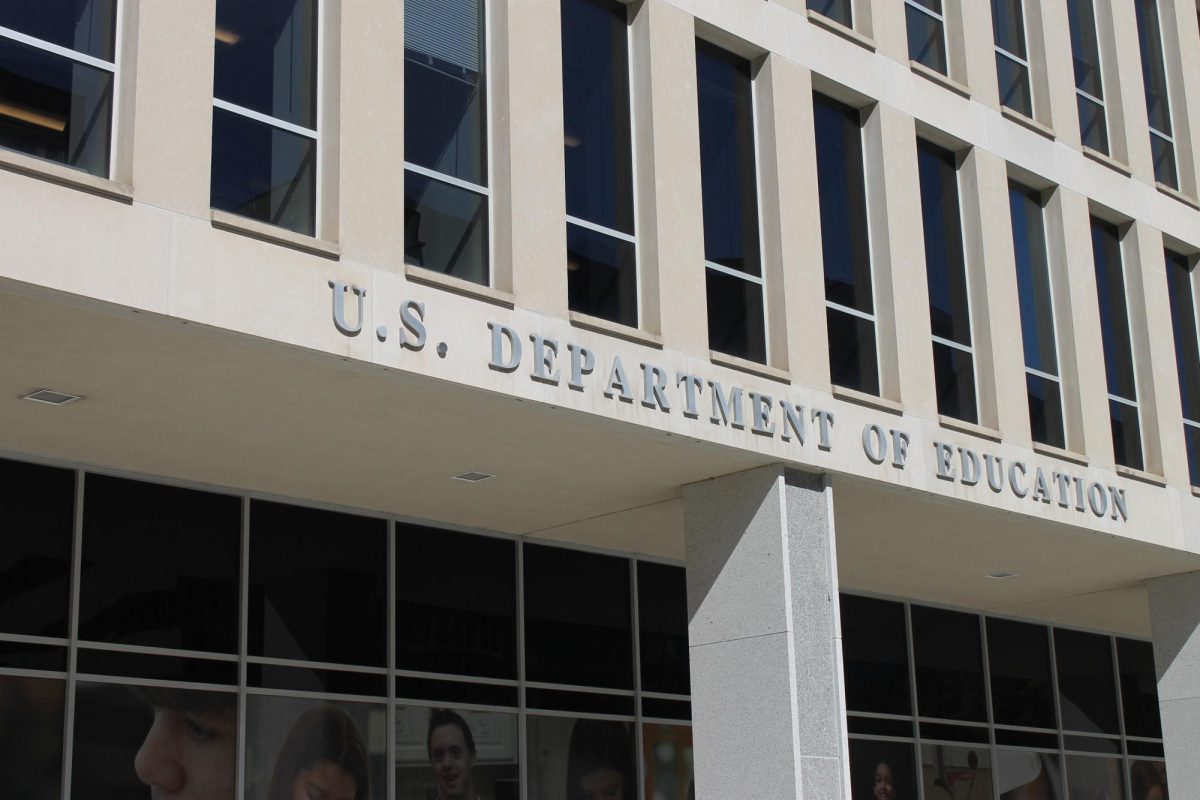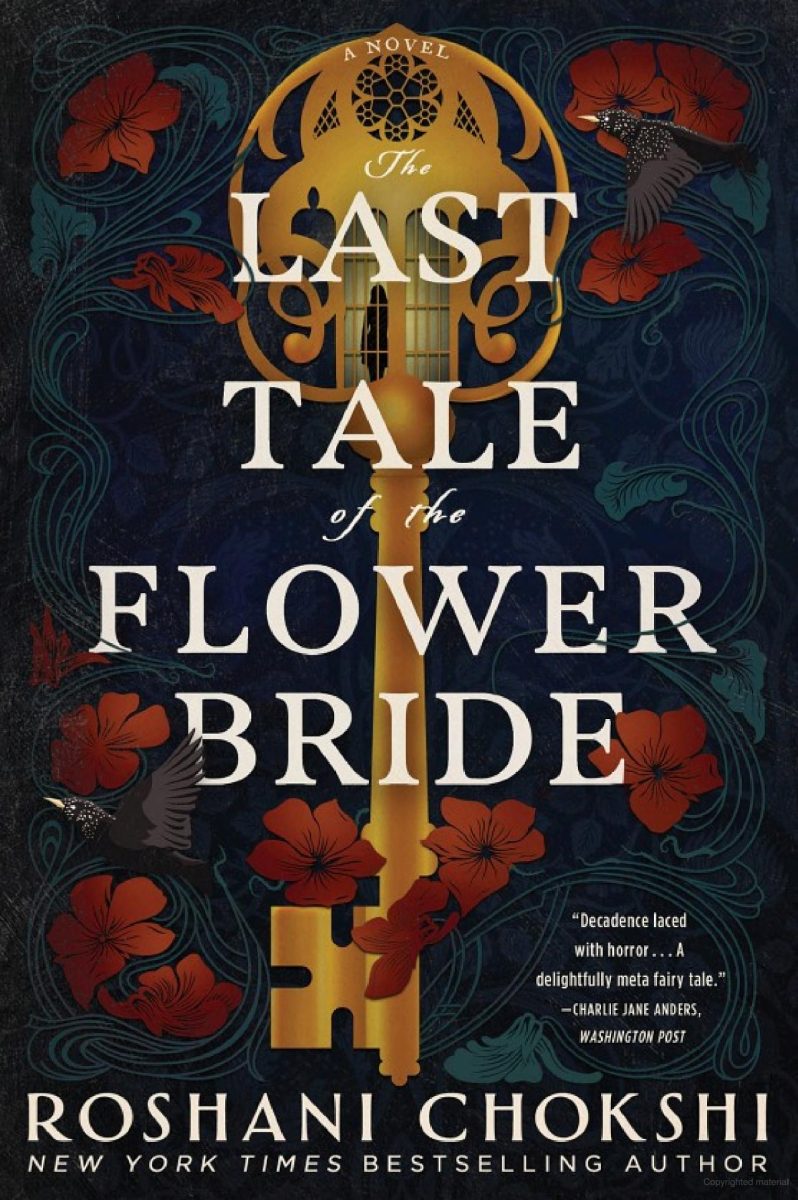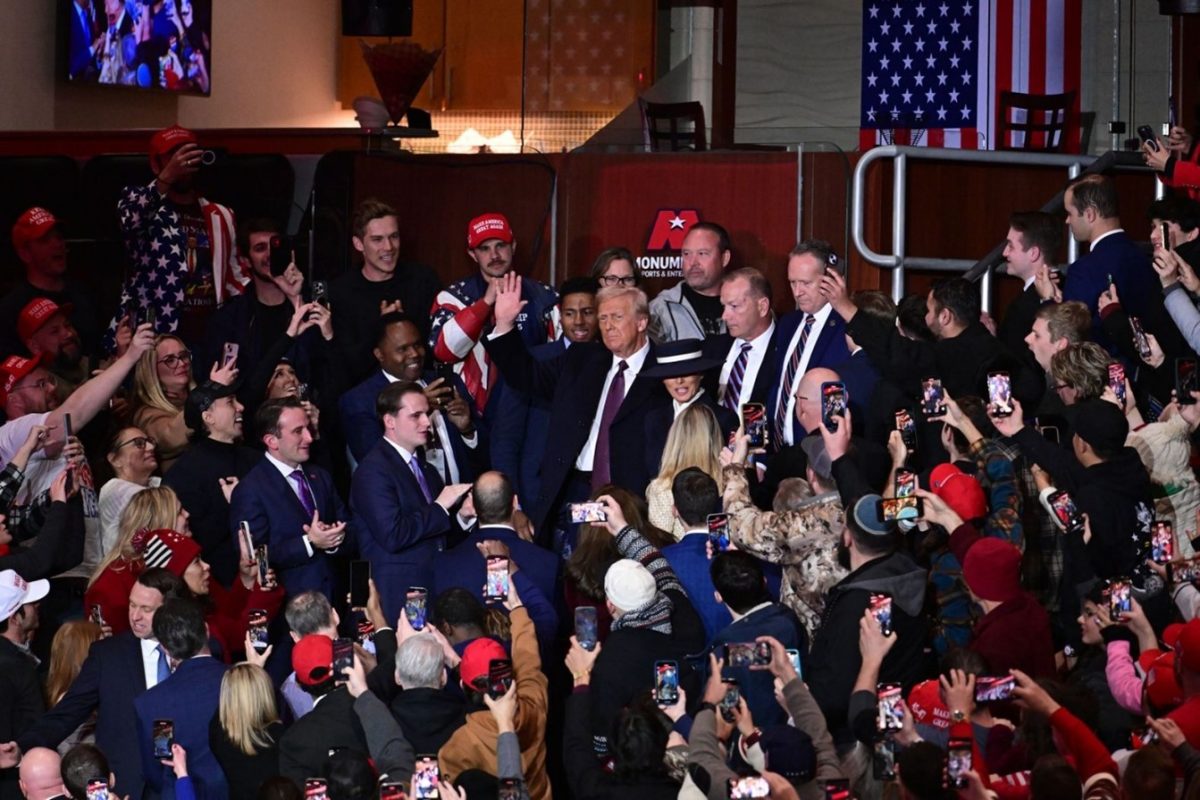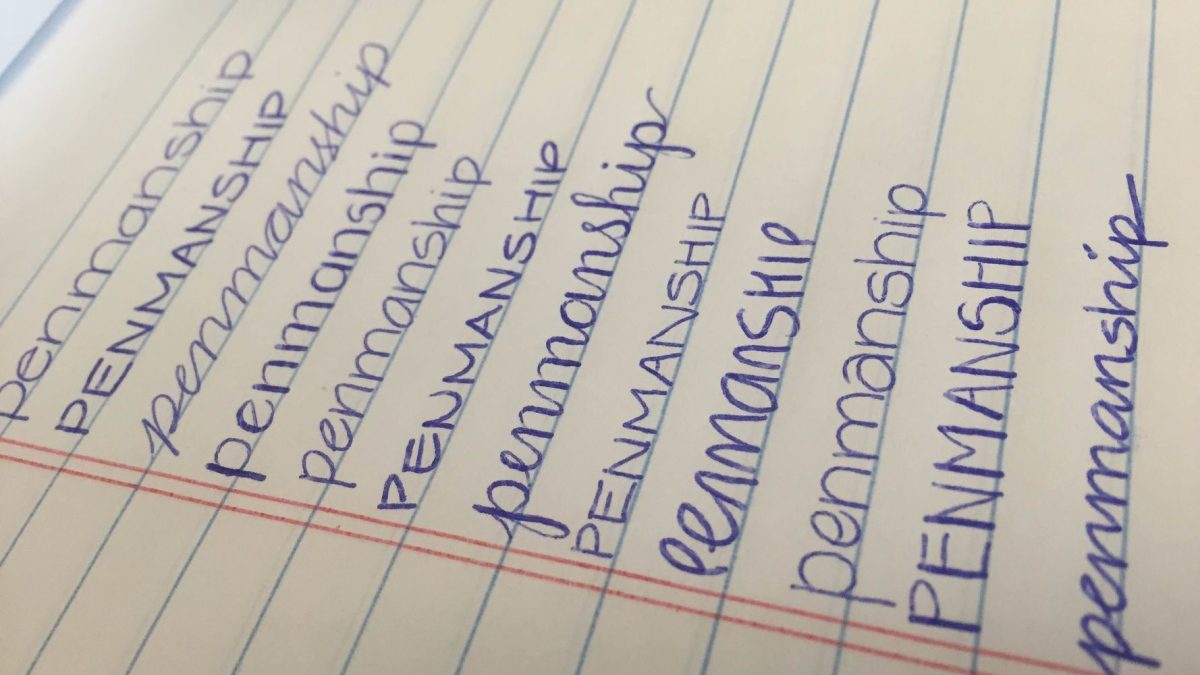A little boy walks the blocks of his city. He sees a bank in the process of being robbed, yet no police arrive to stop it. He sees a man shot. The man did nothing wrong; he was simply wearing a shirt of the wrong color.
This city has no walls, and yet the boy knows he will never escape its limits. He was born there, and he will die there. It is simply the way things work in this city. It is a city overcast by the clouds of racism and poverty, and the boy knows that cities like it exist all around the country.
Some people would call this city hell. Others might call it Compton, California. To Kendrick Lamar, it is home. It would make sense for any person to do anything in their power to try and help this dystopia, but no one has ever been up for the challenge. Until now.
Kendrick Lamar sought to spread the word of change through his music, which he proclaimed to be the only hope we have left in this world. And so he did.
In his magnum opus To Pimp a Butterfly, Kendrick Lamar exaggerates his already influential style into one never seen from any rapper before. He recognizes the ills of society, and believes it is time to make a statement. With an experimental, narrative-based style that radically transformed the ideas of what hip-hop should be, Lamar dives into a host of controversial topics including racism and class struggles, all while invoking the influential figures who inspired him in reaching the position he is in today. Change is inevitable, and Lamar believes it is his duty to serve as its deliverer.
Departing from the shallow, piecemeal style that defines hip-hop today, Lamar succeeds in building a continuous, comprehensive narrative that makes his message even more apparent. As opposed to the shallow, computer-based beats that normally make up hip-hop, To Pimp a Butterfly consists of jazzy, instrumental beats that actually feel like they have substance. Listeners can hear guitars, saxophones, pianos, the whole nine yards. A return to traditionalism, and yet also a revolutionary change. The contents of the beats convey what Lamar ultimately intends to achieve on this album; this is intended to be a work of art, a way to spread a message. This is not intended to generate Billboard hits.
And this style pervades throughout the album. Lamar masterfully employs contrast throughout the album, switching between bubbly, upbeat instrumentals like “King Kunta” and the eerie, screaming beats of songs like “u.” It can feel like two completely different albums.
And yet somehow, amid the contrast, Lamar still manages to seamlessly blend the tracks into one continuous narrative, giving listeners no time to breathe in between songs, and often, making it unclear when one masterpiece ends and the next begins.
This narrative is where Lamar truly stretches the boundaries of what can be considered hip-hop. Unlike the typical rap album, where shallow, disjointed tracks all aim at creating the next song of the summer, on To Pimp a Butterfly Lamar emphasizes that the entire album makes up a continuous narrative, putting the spotlight on his story and purpose in the process. Lamar uses his unique storytelling to make sure listeners understand that this album is here to make change. This genius departure from the typical hip-hop style makes sure that although the music is a masterpiece in itself, Lamar’s message is the main focus of the audience.
And from that point on, this message is what makes To Pimp a Butterfly such a masterpiece.
After suffering through the violence and poverty of Compton, Lamar makes it his duty to expose and criticize the evils that plague his hometown by sharing horrific, yet common experiences endured by all citizens of Compton. The album’s narrative speaks on the psychological effects of Compton’s widespread poverty and lack of class mobility. Lamar, like most Compton residents, feels trapped, comparing his situation to slavery. But Lamar is not a slave to one master; he is a slave to the system, to “Demo-crips” and “Re-blood-licans,” the politicians who he claims are just as bad as the violent criminals of Compton’s streets for making no effort to stop the violence. He uses this harsh diction, putting a violent twist on political parties, to transform them from a respected image into one of criminality and danger. And he makes his purpose in this very clear: the system must be changed, and he will stop at nothing to lose his chains.
But the people, Lamar admits, must take some responsibility. On the album he comments on how the pressures of poverty contribute to Compton’s vicious, unescapable cycle of suffering. These pressures eventually explode into gang violence and crime, where the division between different gangs stops the people of Compton from lifting each other up, and instead, forces them to start tearing each other down. He remarks that it is no longer the Compton versus the world mentality that is needed to make it out of poverty; it is Bloods versus Crips, Compton versus Compton.
At this point, without any sense of being unified, it eliminates the odds of anyone making it out. These comments serve as a wakeup call to the rival gangs of Compton—a message saying that they will never make it off the streets unless they change their ways. These perpetrators are no better than “a white man with slave boats,” says Lamar on “i,” using a powerful yet heinous comparison to outline truly just how detrimental the actions of gang members are to their own wellbeing. In other words, they are contributing to their own enslavement, and taking the rest of their people along with them.
Realizing the problem is rooted much deeper than he originally realized, Lamar zooms out throughout the narrative from the issues of Compton to detail the institutional racism plaguing America on a nationwide scale, hoping his words will inspire others to change. Lamar begins as an idealist. The narrative starts with the idea that race should not matter in daily life. It’s simple, as Lamar says, “complexion don’t mean a thing.” As this narrative continues, Lamar intentionally morphs his character into a hardened cynic as his sense of naivety is lost.
As the story shifts, the realization that he will never escape racism arrives, and with it, comes an enraged, prideful attack on his oppressors. His words laced with boiling, venomous anger, Lamar lashes out at everyone and everything he can find. Some of his victims include: the government, the police, (or the po-po, as Lamar calls them) and most of all, white culture as a whole. In songs like “The Blacker the Berry” Lamar appeals emotionally to both his pride in his heritage and the pride of his listeners, while attacking those who plan to “terminate” his culture, in an insult to their racist views. He wants his fans to feel as proud of their heritage as he (or his character) feels. Lamar uses these powerful, aggressive words to assert that no matter what people make it seem, he believes that racism will always be ingrained in America society and can’t be fixed.
As the violent spree continues, Lamar begins to attack racist society from the top down, dealing with themes of police brutality and governmental inequality. On “Alright,” Lamar repeatedly roars in the chorus that he “hate[s] po-po, they wanna kill us dead in the street for sure.” This loud, staccato repetition sticks in the head of listeners, further emphasizing Lamar’s views on police brutality. But through the song’s upbeat pace and aggressive vibe, Lamar makes the message clear. This is not a song of lament; it is a song of pride. A song of standing up in the face of oppression. The title speaks for itself. No matter what happens, whatever challenges authority throws at African Americans, they will still be alright in the end.
Continuing this contempt for authority, Lamar cites history in his aversion to trusting the government. Once again on “Alright,” and many other songs throughout the album, Lamar repeatedly refers to the idea of “forty acres and a mule.” This reference dates back to the Civil War, where Union troops were instructed to distribute forty acres of land and a mule to the slave families they freed in the South, in an attempt to set them up for a successful life. It should be a symbol of hope, of facing oppression and coming out stronger on the other side. But Lamar, in his genius, does not use this order as a signal for optimism; he uses it for the exact opposite. Historically, the order was never enforced, leaving countless African Americans stranded in poverty. Over time it has become a symbol of betrayal—yet another promise to African Americans broken by the government.
Through this allusion, Lamar is establishing his view that the government will never help, and his former naïve optimism is long gone as he continues to be discouraged and confused by America’s racist system. Although the character is repeatedly expressing this disillusionment with society, Lamar clearly conveys it in a negative light, ultimately displaying to the listener that his character is confused and misguided.
He ends up creating themes about mistrust and independence, forming his character’s “us versus them” mentality that only causes the vicious cycle of racism to continue.
It has become clear by this point in the narrative that Lamar needs someone to guide him through this confusion. Throughout the album, Lamar repeatedly alludes to the influence of his late rap idol Tupac Shakur on his musical career and the values he displays, allowing Lamar to realize it is now his turn to carry the torch of purpose in hip-hop.
At first, he dances around the idea of Tupac’s influence with small details. To Pimp a Butterfly came out on the exact twenty-year anniversary of Tupac’s “Me Against the World,” widely considered to be Tupac’s best and most thematically purposeful album. There are other parallels in the track list, with songs lining up with their counterparts on Tupac’s album (Kendrick’s “Momma” versus Tupac’s “Dear Mama”) and allusions to Tupac lyrics. But these details are small. They could be easily overlooked.
But as the album’s narrative progresses, Lamar ramps up the comparisons. It is a classic example of form following function. The growing frequency of the references as the album continues represent how Tupac continues to gain more influence in Lamar’s life as he grows older. The comparisons are confirmed on “Mortal Man,” the album’s last track. The song is concluded with a move of artistic genius: a six-minute splicing of Tupac quotes interlaced with inquiries from Lamar to give the appearance of an interview. It is only now when Lamar finally flat out admits Tupac’s influence, referring to himself as “an offspring of [Tupac’s] legacy.”
He takes this opportunity to converse (albeit artificially) with Tupac about the themes previously mentioned on the album and how they have been shaped by Tupac’s influence. It’s impossible to miss. Even if someone made it this far into the album without realizing the main themes, it is now right in the face of the listener. Even more importantly, it is a masterful way for Lamar to show where his inspiration came from while also adding weight to the messages discussed on the album. It is no longer just Lamar saying it, but one of hip-hop’s all-time greats, a member of rap’s Mount Rushmore. It ambitiously walks the line of music and intellectual conversation—exactly Lamar’s purpose.
It is clear that Lamar hopes to inspire the world’s next generation of rappers and change-makers, just as Tupac inspired him. He set out to make a work of art that still spreads a powerful message, and he exceeded all expectations in achieving his goal. To make such an insightful album, it was necessary to stretch the confines of music, and Lamar did so without hesitating, redefining what it means to make a hip-hop album in the process. With its insightful narrative, impactful themes, and intellectual nature, To Pimp a Butterfly arrived as an absolute game-changer in the rap industry. And most importantly, through Lamar’s message, the dark clouds over Compton’s dystopia and those like it around the country got a little thinner, and the sun can shine over these cities ever so slightly brighter.


